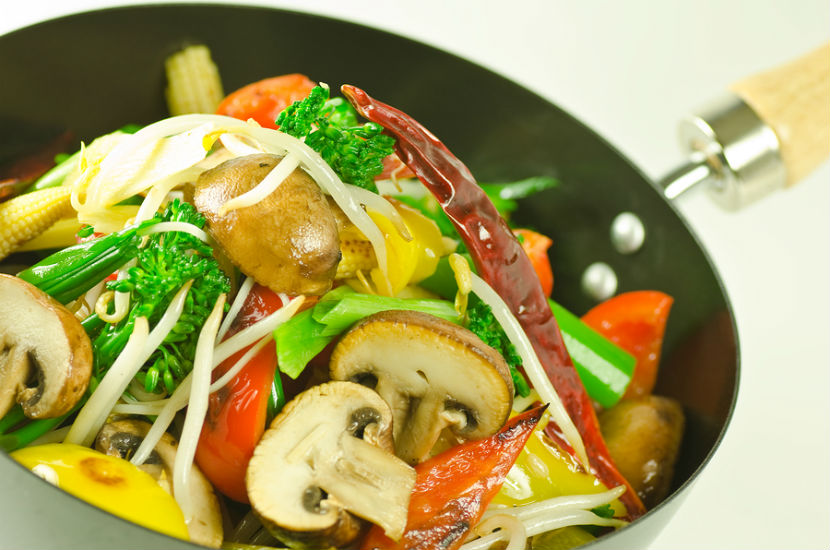
Following a gluten-free diet can be a challenge. Planning your meals can help make it easier. Use this sample meal plan to give you ideas on how you can enjoy healthy gluten-free eating.
Sample meal plan
Here is a sample gluten-free meal plan. The amount of food you need depends on your age and sex. You can tailor this menu plan to meet your needs.
|
Breakfast
|
175mL (3/4 cup) warm cooked millet, amaranth, quinoa or pure, uncontaminated oatmeal 15mL (1 Tbsp) ground flax seed 125mL (1/2 cup) fresh fruit (like apple, pear, banana or blueberries) 250mL (1 cup) tea with lemon
|
|
Morning snack
|
125mL (1/2 cup) vanilla flavoured low-fat yogurt* 2 mandarin oranges Water
|
|
Lunch
|
Noodle and vegetable salad - 250mL (1 cup) soba noodles (100% buckwheat) - 250mL (1 cup) of mixed shelled edammame, shredded carrots and shredded cabbage - 75g (1/3 cup) canned chickpeas, lentils or mixed beans, rinsed and drained - ½ avocado, sliced - 15mL (1 Tbsp) sesame seeds - 15mL (1 Tbsp) gluten-free salad dressing* - 125mL (1/2 cup) fruit (like strawberries, mango or peaches) Water
|
|
Afternoon snack
|
30g (1/4 cup) almonds 1 small apple or 6 dried apricots 30g (1/4 cup) cheese, cubed (like mozzarella, cheddar, gouda or Swiss) Tea
|
|
Dinner
|
Stir-fry - 75g (2 1/2oz) chicken, firm tofu or shrimp - 250 mL (1 cup) mixed vegetables, such as red pepper, broccoli, carrots and snap peas - 250mL (1 cup) brown rice - 15mL (1 Tbsp) oil - Gluten-free sauce or seasoning* Water
|
|
Evening snack
|
1 homemade small whole grain muffin made with gluten-free flour or 2 gluten-free* cookies 250mL (1 cup) low-fat milk
|
*Look for products that say “gluten-free” on the label. If a product doesn’t say “gluten-free”, read the ingredient list. Stricter Canadian guidelines require that gluten-containing products be clearly labelled. The ingredient list will say “contains: wheat/gluten” if it contains this ingredient so you can avoid it. If you are unsure about an ingredient, call the company and ask.
Tips for gluten-free eating
Use Canada’s Food Guide to help you plan healthy meals
-
Foods in the Vegetables and Fruit, Milk and Alternatives, and Meat and Alternatives food groups are naturally gluten-free.
-
For a list of grain products that you can eat, read Eating Well with Celiac Disease.
-
Choose high-fibre, gluten-free grains more often, like soba noodles (100% buckwheat), quinoa or brown rice.
Cook and bake gluten-free
-
Make your own bread and baked goods using gluten-free flour. This can help save money and be more nutritious.
-
When preparing foods from scratch, choose ingredients that are naturally gluten-free that are inexpensive – try rice, potatoes or sweet potatoes, corn, beans, peas and lentils.
Look for the following gluten-free cookbooks in your local bookstore or library:
-
Gluten-Free Diet: A Comprehensive Resource Guide, 5th Edition. Shelley Case RD. 2014. https://shelleycase.com/
-
Complete Gluten-Free Diet and Nutrition Guide. Alexandra Anca RD and Theresa Santandrea-Cull. 2010.
-
1,000 Gluten-Free Recipes. Carol Fenster PhD. 2008.
-
The Gluten-Free Cookbook for Kids: 101 Exciting and Delicious Recipes. Adriana Rabinovich. 2009.
-
Pulses and the Gluten-Free Diet: Cooking with Beans, Peas, Lentils and Chickpeas. Shelley Case RD and Carol Fenster PhD. Available free from: www.pulsecanada.com/media/gluten-free-booklet.pdf.
-
Wheat-Free Gluten-Free Cookbook for Kids and Busy Adults. 2nd edition. Connie Sarros. 2009.
Get more ideas for making gluten-free substitutions in the kitchen.
Read food labels when grocery shopping
-
Look for products that say “gluten-free” on the label.
-
If a product doesn’t say “gluten-free”, read the ingredient list. Stricter Canadian guidelines require that gluten-containing products be clearly labelled. The ingredient list will say “contains: wheat/gluten” if it contains this ingredient so you can avoid it. If you are unsure about an ingredient, call the company and ask.
-
Avoid buying foods from bulk food stores. Even if the ingredient or food is gluten-free, it may have come in contact with gluten-containing foods.
Find out more about hidden sources of gluten.
Bottom line
Eating healthy while living gluten-free means choosing a variety of naturally gluten-free foods and substituting with gluten-free alternatives. Follow Canada’s Food Guide when planning your healthy gluten-free meals.
You may also be interested in:
Eating Well with Celiac Disease
Can People with Celiac Disease Eat Oats?
Fibre and the Gluten-Free Diet
The Canadian Celiac Association’s Pocket Dictionary of Ingredients
Last Update – May 15, 2018